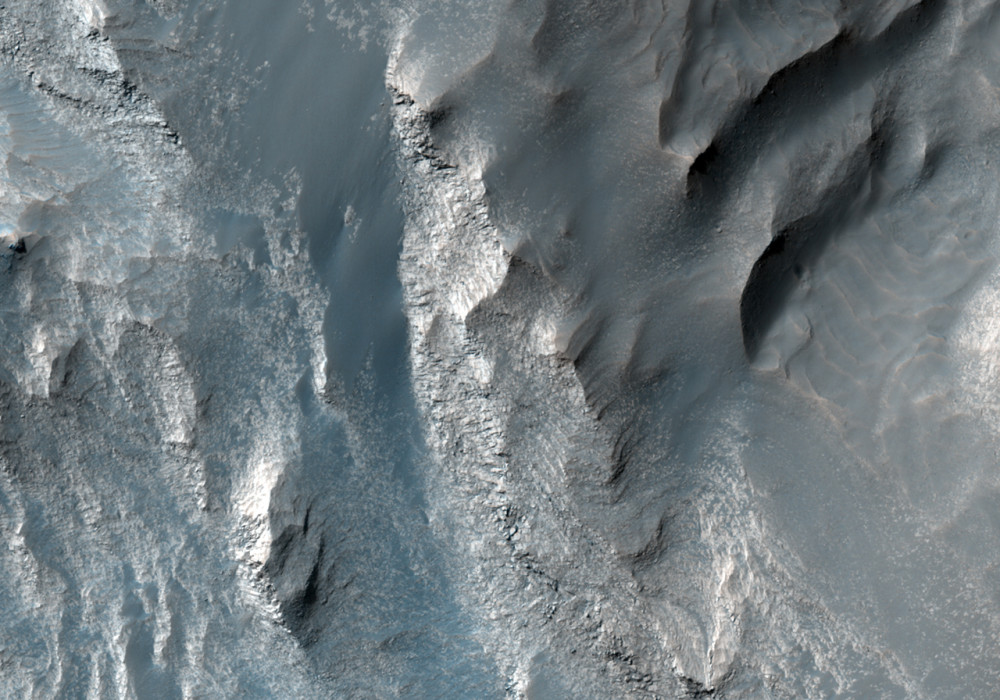Many of the troughs of Valles Marineris contain mounds composed of light-toned layered deposits. Scientists have been debating both the origin of these layered deposits and their age of deposition relative to the troughs.
Some scientists think that the layered deposits formed first and then were covered by lava flows that make up the plains. Later, formation of the troughs of Valles Marineris created large openings through the plains that exposed the buried layered deposits. Others have argued that the light-toned layered deposits formed after the troughs and filled up portions of the canyons.
The chaotic terrain in Juventae is believed to have formed when subsurface water in the ground flowed away, causing collapse of the ground and leaving behind numerous hills along the floor of the trough.
In this HiRISE image, the geologic contacts between the wallrock (darker units at the top of the image), light-toned layered deposits, and darker hills of the chaotic terrain are visible. By studying the image, scientists hope to determine what are the relative ages of these different units in order to decipher the geologic history of this region. A stereo image of this location could be even more helpful because it will show the three-dimensional relationships between the different units, thus revealing more information about their relative ages.
Written by: Cathy (11 July 2008)
This is a stereo pair with PSP_008998_1780 .
More info and image formats at http://hirise.lpl.arizona.edu/PSP_008708_1780
Image: NASA/JPL/University of Arizona
